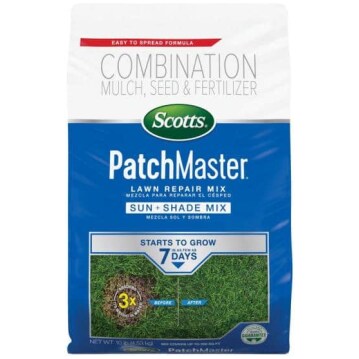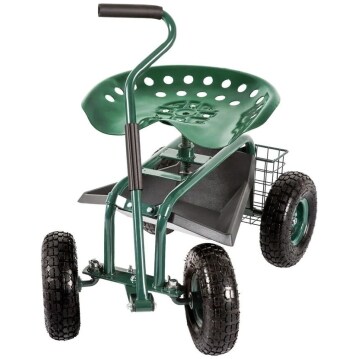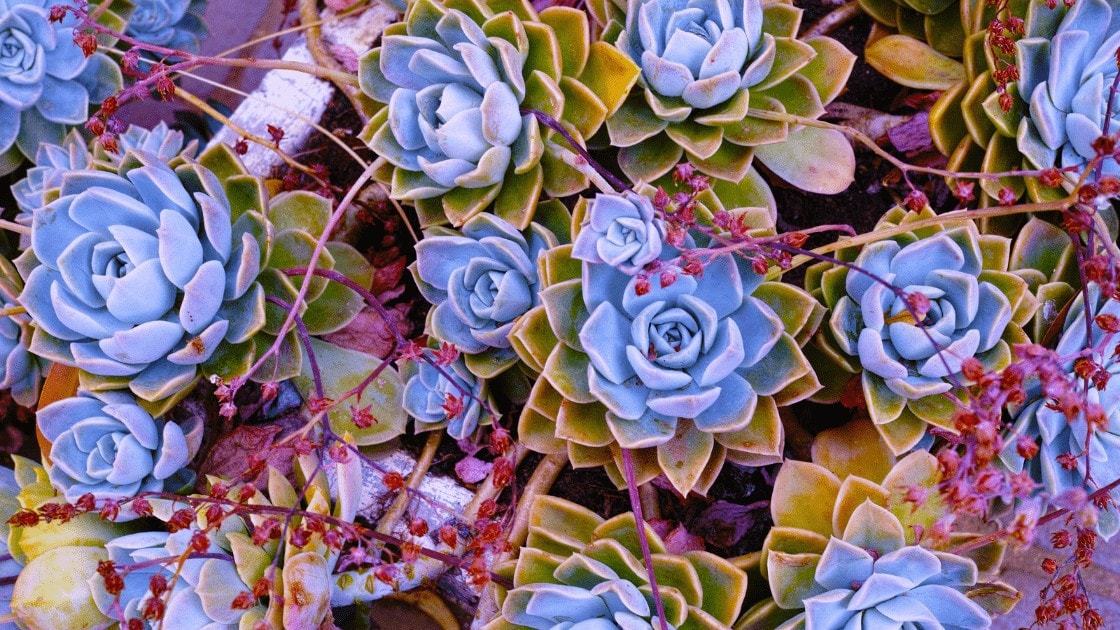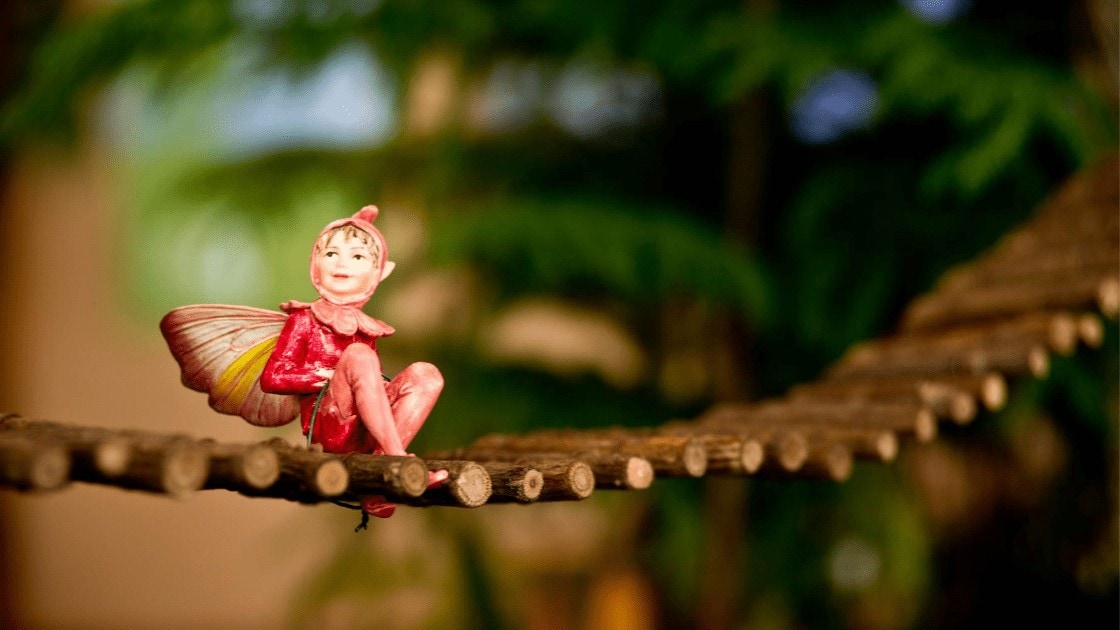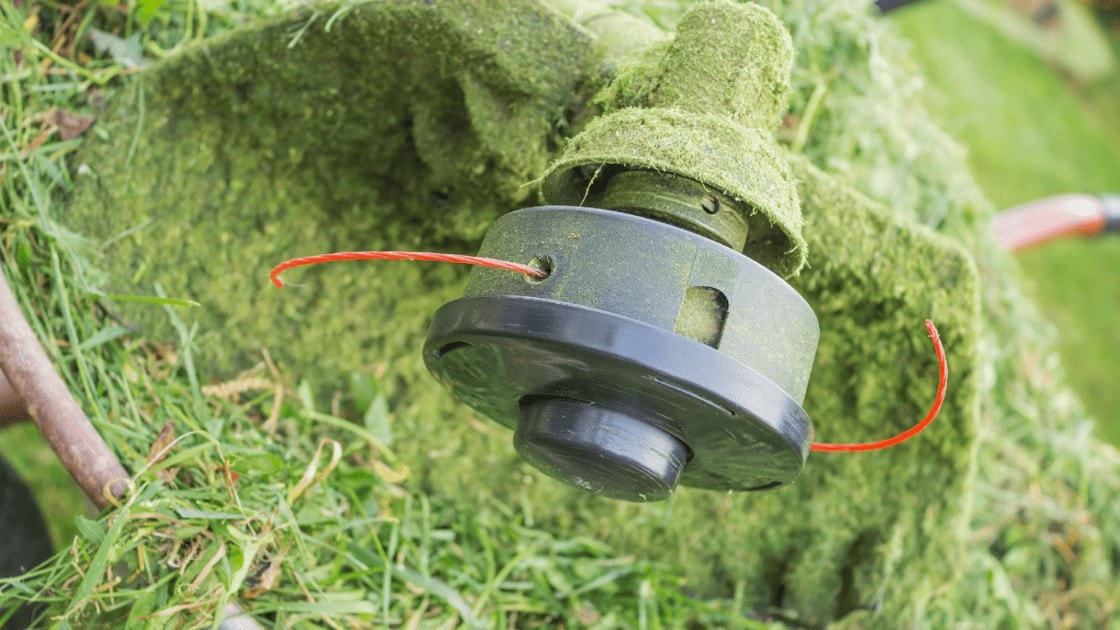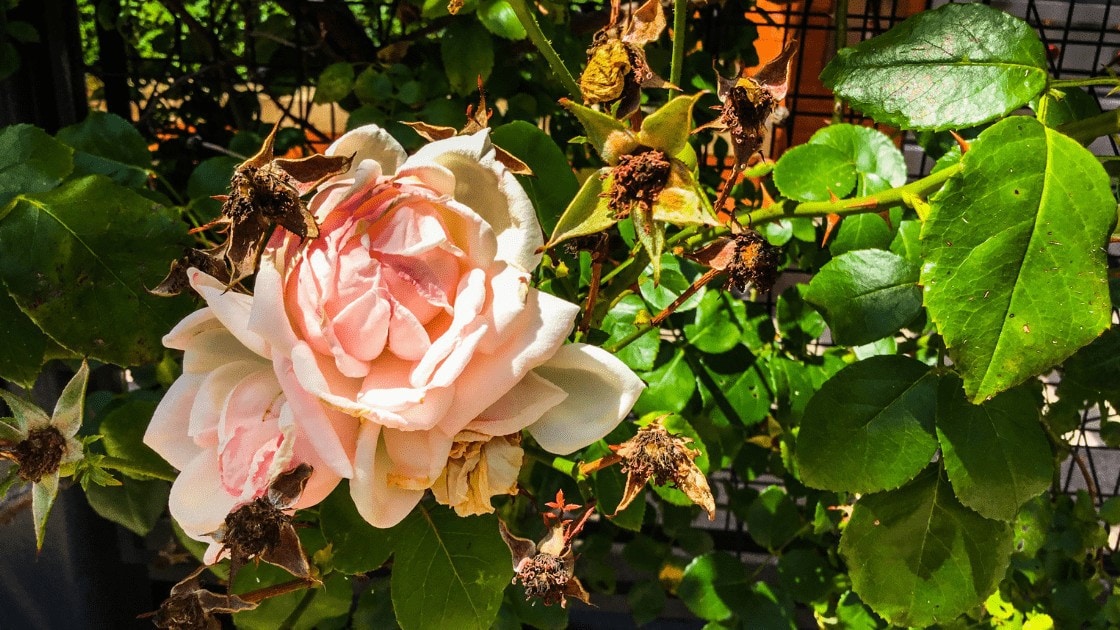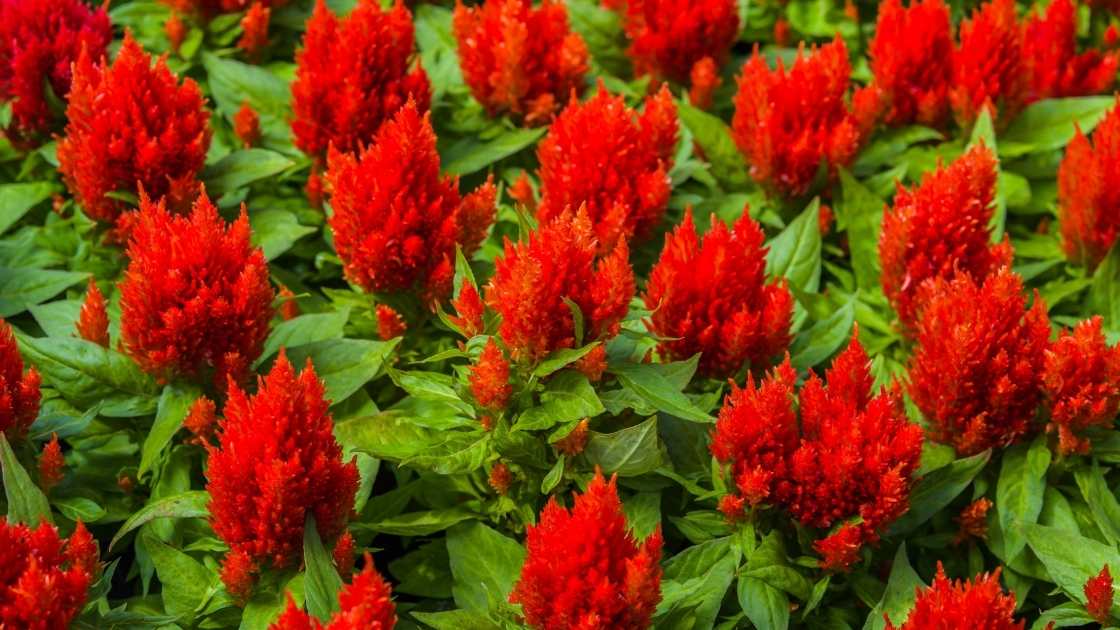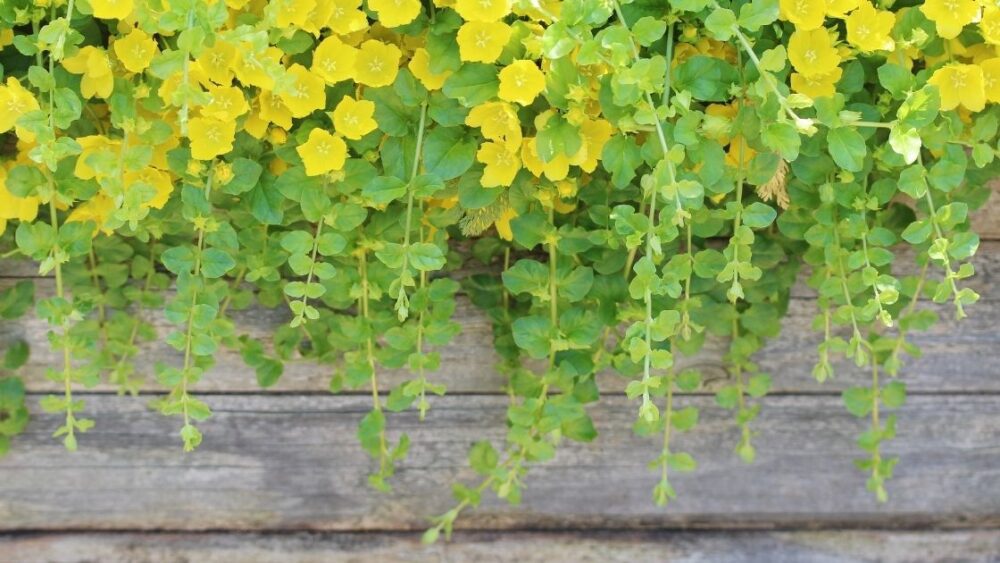
Creeping jenny (Lysimachia nummularia) is one of the most resilient and versatile creeping ornamental plants. Although it is invasive and easy to grow, it still has certain growth requirements such as, soil, light, humidity, etc. – if those are not met, it may refuse to grow and flower. In the following paragraphs, we’ll take a look at the possible reasons for poor growth in this plant and will help you solve any problems you may have! Let’s get started!
What Can Cause Creeping Jenny to Not Grow Properly?
Here is a quick list of the main causes to consider if your creeping jenny grows poorly and refuses to spread:
Too Little or Too Much Light
Creeping jenny can tolerate full shade, but it will always grow best if given at least some sunlight – partial sunlight works best. Full sun for most of the day can also work, but requires some acclimation – if the plant is used to growing in shade and is suddenly exposed to direct sunlight, scorching of the leaves, wilting and poor growth may occur.
Browse our Affiliate Products
Creeping jenny will grow around 5 times faster with optimum light levels(~40,000 lux) as it will in full shade (~6,000 lux).
Humidity and Watering
Creeping jenny likes high-humidity environments and has no problems dealing with overwatering – it’s often used as an ornamental plant for small, decorative waterfalls. It can grow in semi-aquatic settings as well.
Although most houseplants like a drought period between each watering, creeping jenny likes a constantly damp soil. This is also the case with most other members of the Primrose family, including the common primrose. So make sure you’re giving the plant a good watering a few times a week – drought stress can certainly slow down and limit its growth.
For continued reading on primroses, check out this article. The Colorful Perennial Primrose: Plant, Grow, and Propagate Guide
Lack of Nutrition in the Soil
Creeping jenny will not grow well in soils that lack nutrition. The first sign of nutritional deficiencies usually is yellow, poor growth. However, keep in mind that certain varieties (‘Aurea’ in particular) naturally have pale, more yellow leaves, even when they’re thriving.
If you’ve never given your creeping jenny nutrients and its growing poorly, this is the first thing to try. A nitrogen-heavy or a balanced fertilizer works best. Cheap lawn fertilizer can also work well when used in a dilute concentration.
In rare cases, a micro-nutrient deficiency may be to blame – molybdenum, manganese or boron for example.
In that case, cheap NPK fertilizers will not be of any help and a complete fertilizer, containing all 6 micro-nutrients should be used. Different deficiencies have different symptoms, but those are difficult to identify in a small-leaved plant like the creeping jenny. The only practical way to diagnose a deficiency is to try and correct it through fertilization and wait for improvements.
Diseases
Creeping jenny is used to high-humidity environments, in which fungal and bacterial spores are abundant. It is naturally resistant to those diseases and can succumb to them only if stressed by unfavorable growing conditions – excess heat, drought or lack of light.
The best way to remedy fungal diseases is to simply give your plant better growing conditions – it will quickly put out new growth that will be healthy. We’ll go over the optimum growing conditions in a minute.
How Do I Get My Creeping Jenny to Bloom?
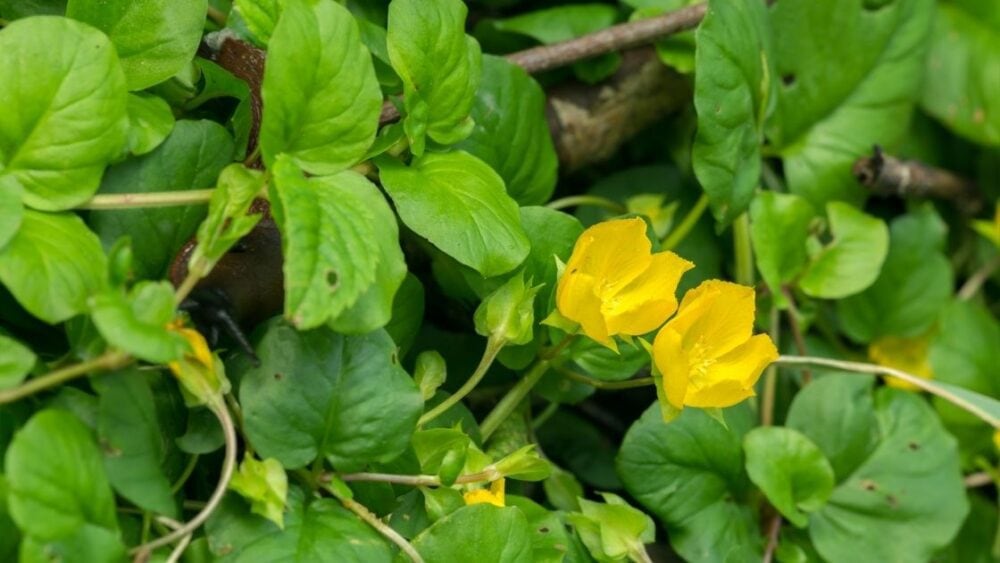
Although creeping jenny doesn’t have the most impressive or long-lasting flowers, they can be very numerous and are still pretty. This plant naturally flowers during the summer, but in warmer zones (7 and above) it may decide to flower a bit earlier.
There is not much you can do to ‘force’ the plant into flowering – if the plant is given optimal conditions and is grown outdoors in the northern hemisphere, it will eventually flower.
Here are the main factors that can prevent flowering:
- Too high nitrogen/phosphorus ratio
If creeping jenny is given a lot of nitrogen, but little phosphorus, it will keep growing and spreading, but may not flower. If that’s the cause, the tiny flower buds will often fall off before they even become visible – or they won’t start forming at all.
By switching to a bloom-promoting, low-nitrogen fertilizer that has a high middle NPK number (5-30-10 for example), you can trigger flowering in a matter of weeks, provided that this is during the summer.
This only applies to healthy plants that are putting out new growth, but not flowering. For plants that grow poorly in general, consider one of the next causes on this list.
- Lack of sunlight
Without ample energy stores, creeping jenny may not initiate blooming. Those energy reserves are in the form of sugar and are directly proportional to the sunlight the plant receives. Although this plant can grow in full shade, it may refuse to bloom if not given very strong light for most of the day.
This doesn’t necessarily mean direct sunlight – partial shade and strong indirect light can also be enough. If the plant suffers from light deficiency, it will probably also not grow very fast.
- Diseases
Creeping jennies are very resistant to disease, but when grown in unfavorable conditions (low light, lack of dip in nighttime temperatures, lack of nutrition), this resistance may drop and the plant may succumb to various fungal pathogens.
The solution is anti-fungal sprays, more sunlight and proper general care. Certain larvae may feast on the leaves of creeping jenny plants, even if the plant is healthy – this may cause enough stress to prevent flowering.
- Geographical region / Unknown factors
Sometimes, even healthy creeping jennies just refuse to bloom without any apparent cause. Many gardeners are unaware of the fact that this plant even blooms, even though they have been growing it successfully for years.
This may be related to the geographical location and its influence on daylight changes and seasonal temperatures – creeping jenny is a plant native to Europe. If grown in more tropical zones, it may refuse to flower even if it’s healthy.
Optimum Growing Conditions
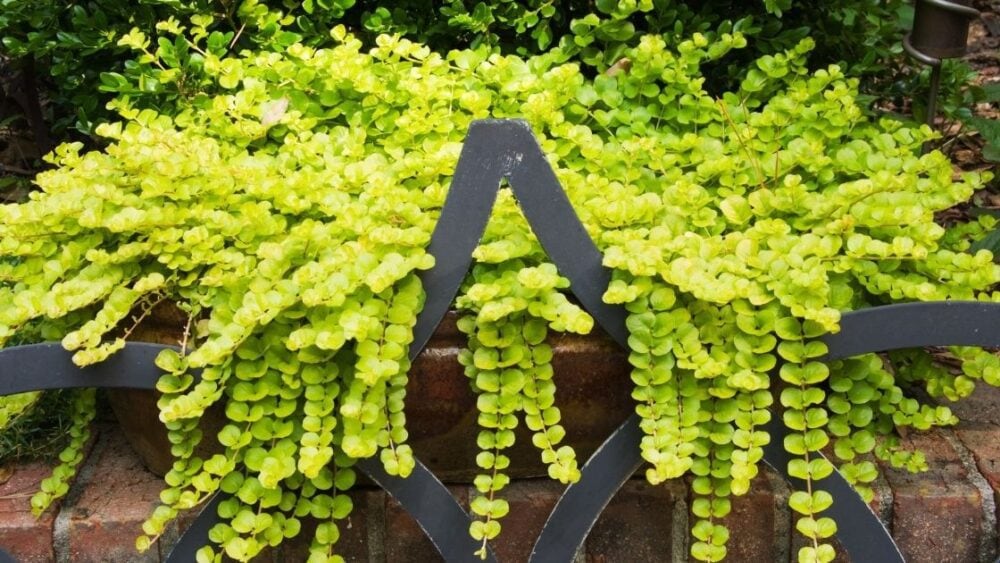
Not let’s go over the growth requirements of the creeping jenny. This is a moisture-loving plant that can thrive in a wide range of soils and under different light intensities.
How Much Sunlight Does Creeping Jenny Need?
This plant can grow in full shade, but it can also adapt to growing in the full sun. Partial shade usually works best and produces the fastest growth. Too much direct sun stresses the plant and may reduce the maximum length to which it spreads, even if it’s properly watered.
What Temperature Is Best?
Creeping jenny likes cooler temperatures of around 75F (24C) – it’s used to growing in moist environments, which naturally cool down due to the evaporation of water from the surface of the soil (evaporative cooling). In hot climates, creeping jenny is best planted in shaded spots with constant high moisture.
What Type of Soil Is Required?
Like other members of the primrose family, creeping jenny can tolerate some soil compaction. In fact, it has such low root aeration requirements that it can be successfully grown fully submerged in water.
However, some general purpose soils tend to accumulate a lot of toxic byproducts when they’re constantly flooded with water and anaerobic conditions are introduced. This can still cause the plant to suffer from root problems brought on by overwatering. Ultimately, a good, well-draining soil works best, but you can certainly experiment by rooting cuttings in different mixes.
How Much Water Do Creeping Jenny Plants Need?
This plant tolerates constant high humidity in its roots, even if the soil doesn’t have the best drainage possible. Creeping jenny doesn’t tolerate drought and is one of the few plants that can be more easily killed by underwatering than by overwatering.
The natural ground cover, created by the foliage of the creeping jenny naturally forms a mulch layer – this prevents water loss from the surface of the soil. If this plant is planted in very small pots, daily watering may be required.
Do They Grow Better Indoors or Outdoors?
Because this is a frost-tolerant, evergreen plant, it is most commonly grown outdoors. Due to its large, spreading structure, it’s not very suitable for indoor growing. However, it is certainly possible to grow it indoors in hanging pots, provided that they are close enough to a bright window. Creeping jenny can be grown as a semi-aquatic plant in indoor fountains or even in planted tanks.
Just like ferns, they continue to spread and cover areas and have almost the same habitat. To read more on ferns click here. Why Are Ferns Unique?
Can You Plant It Directly Outdoors or Does It Require a Pot?
Creeping jenny can be planted directly outdoors, but if your local climate is favorable, it can start spreading too much and become difficult to control. The creeping stems root themselves whenever they touch the ground, making this plant very easily spreading.
Even when grown in pots, it can quickly reach a nearby lawn, root itself in it and start spreading around. Fortunately, this is a non-poisonous plant, so even if it spreads, it poses no danger to pets or wildlife.
What Should You Do If Your Creeping Jenny Is Wilting or Dying?
Make sure that you’re watering the plant enough and that you’re giving it plenty of light. Although creeping jenny can tolerate shade, this doesn’t mean that it can grow indoors in interior lighting.
Inspect the plant for diseases and leaf spots and start giving it an hour or two of direct sunlight each day – this will largely eliminate opportunistic fungal pathogens and will give the plant plenty of energy to start recovering.
Ensure that the condition of the soil is good and try applying dilute, nitrogen-rich fertilizer to see if that helps.
Does Creeping Jenny Deal Well With Unfavorable Growing Conditions and How Can You Compensate For Them?
Creeping jenny can tolerate shade and excessive watering, but it cannot tolerate drought, very high temperatures, low air humidity and obviously – being munched on by too many insect larvae.
In low-light conditions, the color of the leaves will be more pale, sometimes almost yellow. This is not necessarily a problem and the plant will still continue to grow, albeit more slowly.
Do All Varieties Have The Same Growth Requirements?
Almost all of the commercially available Creeping jenny specimens are of the ‘Aurea’ variety. This variety has pale, almost yellow leaves and grows very quickly. Another variety is ‘Goldilocks’, which to most people will look identical to the ‘Aurea’ variety. All varieties have the same growth requirements.
Final Thoughts
Creeping jenny will not grow well if not given enough light, water or nutrition. Other causes of poor growth include fungal diseases, to which the plant may become susceptible when stressed. Flowering in creeping jenny plants can be difficult to control and high nitrogen fertilizers may prevent it. In certain climates, the plant will not flower at all – the reasons for this are not known.

